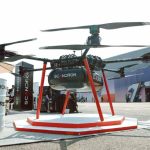Sustainability and innovation, the future of airports
As the aviation industry continues to evolve, airports that prioritize sustainability and innovation will be better positioned to thrive in a changing world.
Airports, as bustling hubs of global connectivity, play a crucial role in today’s modern world. They are not just engines of economic growth but also a window of what an innovative future looks in the digital era.
However, their operations often come with significant environmental costs, including greenhouse gas emissions, noise pollution, and resource consumption. As the aviation industry continues to grow, it is imperative that airports adopt sustainable practices and embrace innovative technologies and solutions to mitigate their environmental impact and ensure long-term viability.
With billions of passengers traveling across continents every year, combined with increasing volumes of cargo flown by air, it is crucial for airports to become drivers of change through innovation and sustainability.
Race Towards Net Zero 2050
The journey to net zero 2050 is riddled with challenges, but the aviation industry is not shying away. Airports, like airlines and other segments of the aviation industry, are investing time, resources and money in its race towards 2050.
Whether it is legacy airports or the new ones, they are all unidirectional – working towards sustainable operations. Sustainability is no longer a fad, but a necessity, if not for now but for the imminent future.
As the aviation industry continues to evolve, airports that prioritize sustainability and innovation will be better positioned to thrive in a changing world.
In this edition, Air Cargo Update delves into the sustainability and innovation practices of some of the biggest airports across the world. Read on…
Changi Airport is switching to cleaner energy
It has been a 12-time champion, winning the coveted ranking of the Skytrax World Airport Awards. Singapore’s Changi Airport is simply the ultimate when it comes to how an airport should be – traveler-friendly, user-friendly operations, sustainable, highly innovative and above all, futuristic. Simply put, Changi is Changi. And it continues to lead on many fronts.
Jaisey Yip, Vice President of the Cargo Business Division at Changi Airport Group (CAG), spells out how the Group is focused on sustainable operations. From 2025, all new airside light vehicles, tractors, and forklifts will need to be electric, and all airside vehicles to be fuelled by cleaner energy by 2040.
To remain on top requires that much more effort and Changi Airport knows that and it continues to invest in innovation, technologies and people. Yip mentions how through innovation and digitalization, Changi Airport hopes to achieve its four main goals – 1) Help improve productivity at the airport; 2) Use-cases meant to improve operational efficiencies; 3) Better supply chain visibility to the community; and 4) Ensure positive sustainability impact.
Innovation and digitalization need to align with objectives
“In the last few years, with the advent of new technologies, automation and innovation, air cargo is catching up. We are seriously looking on how to digitize certain processes. We are not investing in innovation or digitalization because it is a trend, but we look at concrete and clear use-cases and see whether it aligns with the objectives we hope to achieve.”
She mentioned how the airport is constantly engaged with different stakeholders and keeps reviewing different processes to ensure that there are improvements, benefitting all.
“For instance, we look at import and export process flow and at each touch point, we ask ourselves how we can harness automation/digitalization to achieve our objectives. At the import touch point, it starts with the ramp and ends with custom clearance. At the ramp, we have started electrification of ground service equipment and trialling autonomous tractors. At the warehouse level, we are closely working with cargo terminal operators on how to harness automation. For instance, dnata worked with a logistics technology solutions provider, Speedcargo, to install AI-enabled cameras at the truck dock level – when agents log in a shipment, the cameras scan the shipment by its dimension, etc. It gives precise calculations which helps in optimization of the pallets, benefitting both the airlines and the freight forwarders.”
Truck Dock Slot Booking, Optimizing Time
As dynamic as air cargo operations, Changi Airport is in sync. “On August 12, we rolled out as a community, a truck dock slot booking application, which allows cargo agents and truck drivers to book slots in advance before they turn up at the cargo terminals to pick up cargo or drop cargo. They have to link their shipments to the slots, so that the ground handlers have advance information on who is coming in to collect what shipment. This process helps expedite the entire process flow, thus ensuring that trucks are not idle at the terminal.”
Similarly, the border control authority is innovating by getting advance information on goods that are coming in. “They are working with relevant stakeholders on paperless clearance process. We are optimizing each and every touch point.”
Giving utmost importance to information and data points, Changi Airport has streamlined many processes and reduced processing time. “We believe in connectivity, speed, track and trace and delivering shipments in the most reliable manner. We take pride in ourselves for what we do.”
Warehouse Digitalization
Citing how the airport has warehouse digitalization in place wherein algorithms calculate freight, optimize pallet and ensure there is no wastage in unit load devices (ULDs). “Our truck dock slot booking (TDSB) is designed to be AI-driven. It captures the arrival and departure of a truck. It is not based on ‘you said, I said’ but all based on a transparent system. Additionally, TDSB improves productivity by allowing businesses to allocate its manpower and resources more effectively.”
On sustainability, Yip mentions how the community (including the Civil Aviation Authority of Singapore or CAAS) is coming together in their efforts to decarbonize aviation by adopting new methodologies of operation and new technologies. “Right now, we have undertaken a community drive – educating cargo agents, ground handlers and everyone else involved in the supply chain on improving sustainable operations. We are reducing the waiting time of trucks, thus, minimizing carbon emissions. Also, we are working on waste management and circularity – we are recycling wooden pallets, cartons, among many other things.”
Another key initiative the airport has taken is in the realm of pharma cargo movement and the airport CAG is a co-founder and Board Member of Pharma.Aero, a global cross-industry collaboration platform whose mission is to foster global partnerships among pharma shippers and CEIV certified airport communities.
The Group plays an active role in projects that address topical issues and challenges faced by the industry such as end-to-end visibility and sustainability. One initiative is the Green Air Pharma Logistics (GAPL) project, which sets out the building blocks of a Lane Sustainability Readiness Index (LSRI) as a tool to support pharmaceutical manufacturers and freight forwarders in integrating sustainability considerations into their freight procurement and lane assessment processes.
Such efforts also demonstrate CAG’s commitment to global sustainability efforts and the pursuit of green air logistics. “Sustainability is not one party’s responsibility, but everyone in the air cargo value chain,” Yip noted.














